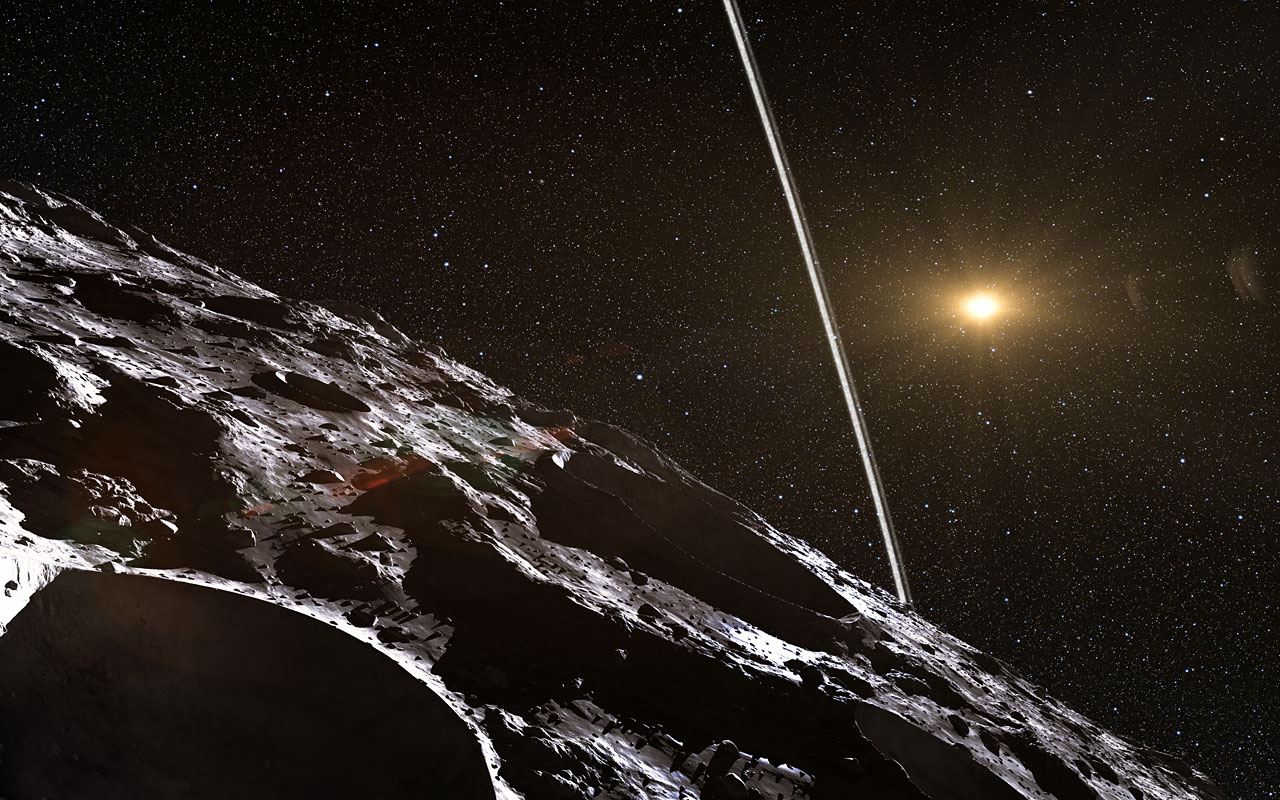Chiron, one of many centaurs hanging around our solar system, may have gas rings surrounding its surface, mirroring those of close by Chariklo and planetary peers Jupiter, Saturn, Uranus and Neptune.
Last year it was established that Chariklo had a gas ring, something that surprised astronomers who had been tracking a series of rocky bodies that possess qualities of both asteroids and comets.
The likes of Chiron and Chariklo are called centaurs because of their dual qualities of asteroids and comets, similar to mythical beings that are part beast part man.
Now MIT researchers have detected features around nearby Chiron that may signal rings, jets or a shell of dust.
Back in the winter of 2011, the researchers spotted a “stellar occultation” whereby Chiron passed by a bright star, briefly blocking its light.
By measuring the light emissions and subsequent shadow, they established that there may be gas rings surrounding the centaur.
“It’s interesting, because Chiron is a centaur – part of that middle section of the solar system, between Jupiter and Pluto, where we originally weren’t thinking things would be active, but it’s turning out things are quite active,” said Amanda Bosh, a lecturer in MIT’s Department of Earth, Atmospheric and Planetary Sciences.
Bosh and her colleagues at MIT, Jessica Ruprecht, Michael Person, and Amanda Gulbis, have published their results in the journal Icarus.
Using two extremely large telescopes in Hawaii – NASA’s Infrared Telescope Facility and the Las Cumbres Observatory Global Telescope Network – the researchers, some of whom worked on establishing the size of Chiron in the early 1990s, made the discovery.

An artist’s impression of Chariklo, nearby Chiron, which itself has a ring of gas. Image via ESO/L. Calçada/Nick Risinger
“There’s an aspect of serendipity to these observations,” Bosh said. “We need a certain amount of luck, waiting for Chiron to pass in front of a star that is bright enough. Chiron itself is small enough that the event is very short; if you blink, you might miss it.”
The team members could not tell if what they saw were jets of dust or a ring of gas, however, an independent group has investigated their findings and think it’s most likely a ring.
It’s unclear exactly what the anomalies are, either jets of dust or a ring of gas, but the increased knowledge of Chiron has clearly excited the team.
“If we want to make a strong case for rings around Chiron, we’ll need observations by multiple observers, distributed over a few hundred kilometers, so that we can map the ring geometry,” said Ruprecht.
“But that alone doesn’t tell us if the rings are a temporary feature of Chiron, or a more permanent one. There’s a lot of work that needs to be done.”
Rings of gas image via Shutterstock